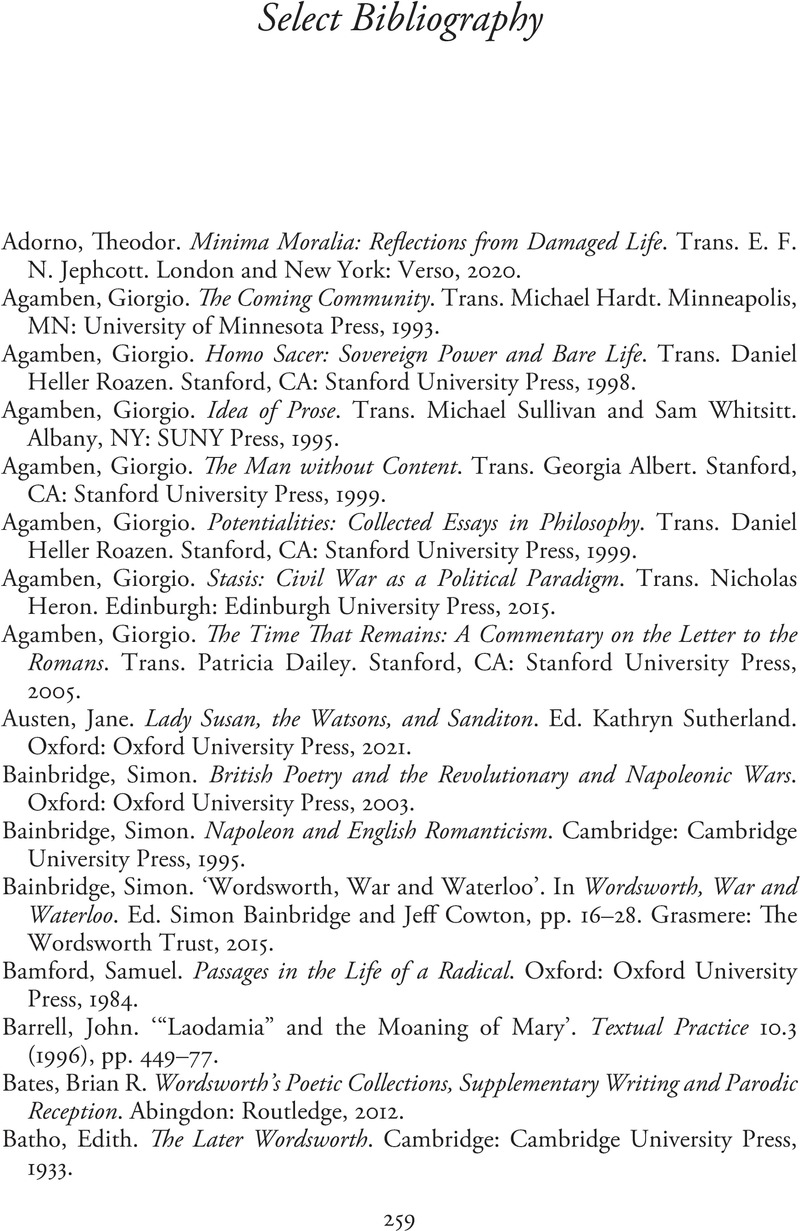Book contents
- Wordsworth After War
- Cambridge Studies in Romanticism
- Wordsworth After War
- Copyright page
- Contents
- Figures
- Acknowledgements
- Abbreviations
- Introduction
- Chapter 1 Conscripting ‘The Recluse’
- Chapter 2 Peace Out of Time
- Chapter 3 Thanksgiving after War
- Chapter 4 ‘Returning, Like a Ghost Unlaid’
- Chapter 5 Violent Waters
- Chapter 6 Wordsworth after Byron
- After Wordsworth
- Notes
- Select Bibliography
- Index
- Cambridge Studies In Romanticism
- References
Select Bibliography
Published online by Cambridge University Press: 06 July 2023
- Wordsworth After War
- Cambridge Studies in Romanticism
- Wordsworth After War
- Copyright page
- Contents
- Figures
- Acknowledgements
- Abbreviations
- Introduction
- Chapter 1 Conscripting ‘The Recluse’
- Chapter 2 Peace Out of Time
- Chapter 3 Thanksgiving after War
- Chapter 4 ‘Returning, Like a Ghost Unlaid’
- Chapter 5 Violent Waters
- Chapter 6 Wordsworth after Byron
- After Wordsworth
- Notes
- Select Bibliography
- Index
- Cambridge Studies In Romanticism
- References
Summary

- Type
- Chapter
- Information
- Wordsworth After WarRecovering Peace in the Later Poetry, pp. 259 - 271Publisher: Cambridge University PressPrint publication year: 2023



